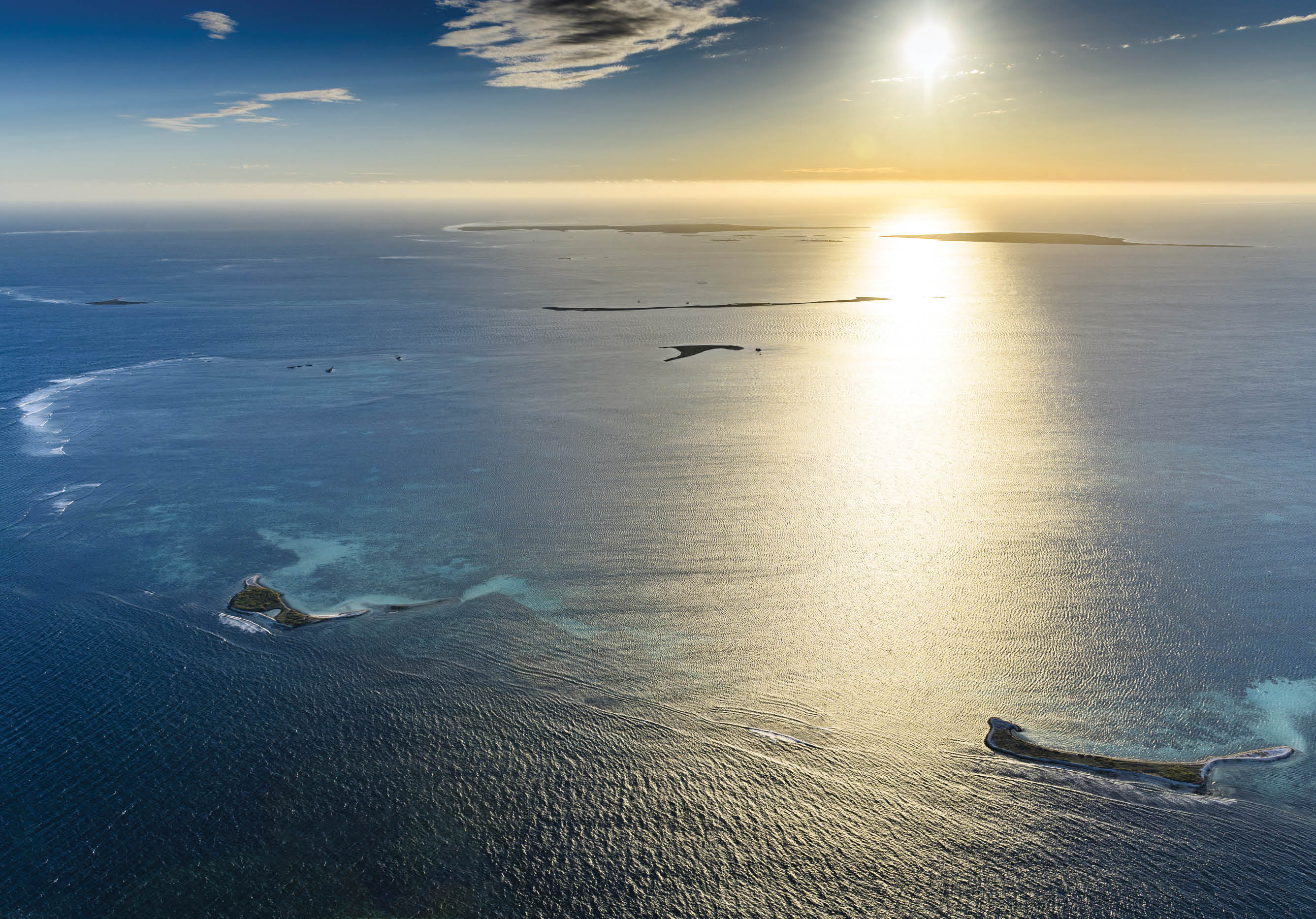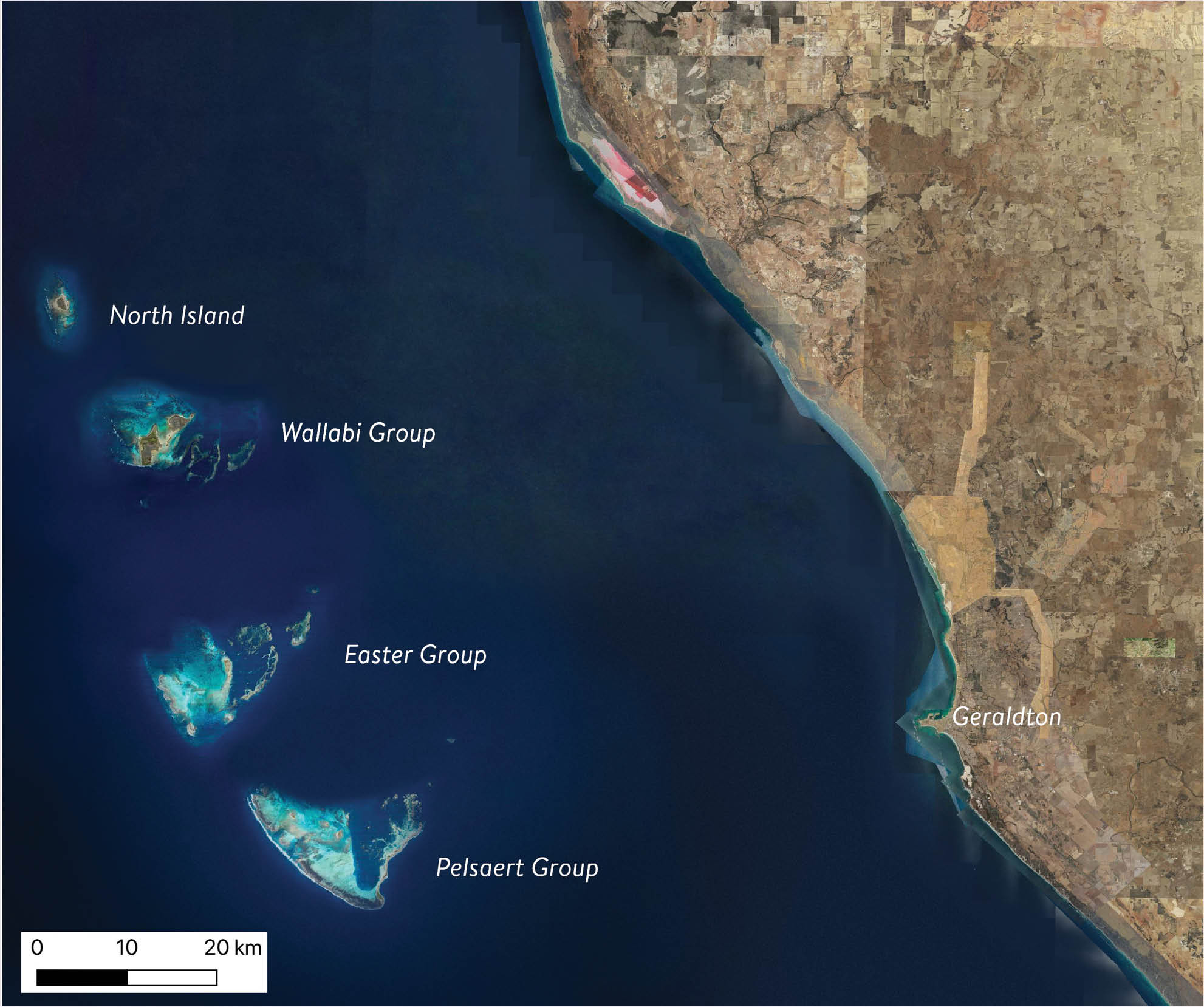
14


HOUTMAN ABROLHOS ISLANDS




The first European report of the islands was by Commander Frederik de Houtman, aboard the ship Dordrecht, in 1619:
‘ ... at night about three hours before day-break, we again unexpectedly came upon a low-lying coast, a level broken country with reefs all around it. We saw no high land or mainland, so that this shoal is to be carefully avoided as very dangerous to ships that wish to touch this coast. It is fully ten mijlen [miles] in length, lying in 28° 46’ latitude’



Located off the coast of Western Australia, approximately 60 kilometres west of Geraldton, the Houtman Abrolhos Islands are a startlingly beautiful maze of sun-bleached coral rubble and limestone islands, coral reefs, and deep water channels near the edge of the continental shelf. Comprising 210 islands known as the Wallabi, Easter and Pelsaert Groups, the islands’ ecosystems are influenced by the warm tropical Leeuwin Current, flowing southwards from the Indonesian archipelago.
Wallabi Group
Separated from the mainland as sea levels rose about 11,500 years ago, the Wallabi Group consists of 46 islands and three main reefs (Morning, Noon and Evening). The group is dominated by East Wallabi, West Wallabi and North Islands; known as the three ‘high islands’, they are the largest land masses in the Abrolhos. East and West Wallabi Islands are part of a remnant continental limestone platform, while smaller islands such as Beacon and Long Islands are built up from coral, covered in parts with sand and vegetation.
The islands are an important habitat and breeding ground for over 90 species of seabirds, including many migratory species. East and West Wallabi Islands are also home to the most diverse terrestrial fauna found in the Abrolhos, with snakes, lizards, native rats and tammar wallabies (Macropus eugenii).
Fish habitat protection area and national park
The surrounding waters have special status as a Fish Habitat Protection Area (FHPA), which includes all waters from the high-water mark of the Abrolhos Islands out to three nautical miles, an area of approximately 2,500 square kilometres. This area supports one of the State’s most valuable fisheries—the western rock lobster (Panulirus cygnus).
In July 2019, the Houtman Abrolhos Islands National Park (HAINP) was created, in support of the State Government’s vision to ‘provide a world-class sustainable tourism experience and create new jobs and economic opportunities in the Mid West region, while protecting the unique natural, cultural heritage, fishing and community values of the Abrolhos’.



Map of the Wallabi Group in the Houtman Abrolhos Islands.
Credit: WA Museum


